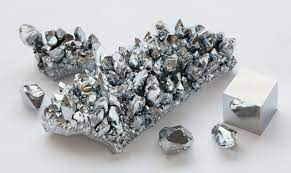Chromium acts as a carbide stabilizer in cast iron. Thus it intensifies chilling of cast Iron , Increases strength , hardness and wear - resistance and is conductive to fine grain structure. Most additions of chromium range from 0.15 to 0.90 percent with or without other alloying elements. Chromium of 1.0 percent or more make castings hard to machine. With 3.0 percent chromium, white cast iron is formed. Special Irons to resist corrosion and high temperatures contain as much as 35 percent chromium.
CONSTRUCTION OF SIMPLE CARBURETOR : The main Components of Simple Carburetor are : Float Chamber, float, nozzle, venturi, throttle valve, inlet valve, and metering jet . In the float chamber, a constant level of petrol is maintained by the float and a needle valve. The float chamber is ventilated to atmosphere. This is used to maintain atmospheric pressure inside the chamber. The float which is normally a metallic hollow cylinder rises and closes the inlet valve as the fuel level in the float chamber increases to certain level. The mixing chamber contains venturi, nozzle and throttle valve. The venturi tube is fitted with the inlet manifold. This tube has a narrow opening called venturi. A nozzle is provided just below the centre of this venturi. The nozzle keeps the same level of petrol as that of the level in the float chamber. The mixing chamber has two butterfly valves. One is to allow air into the mixing chamber known as choke valve. The other is to al...

Comments
Post a Comment